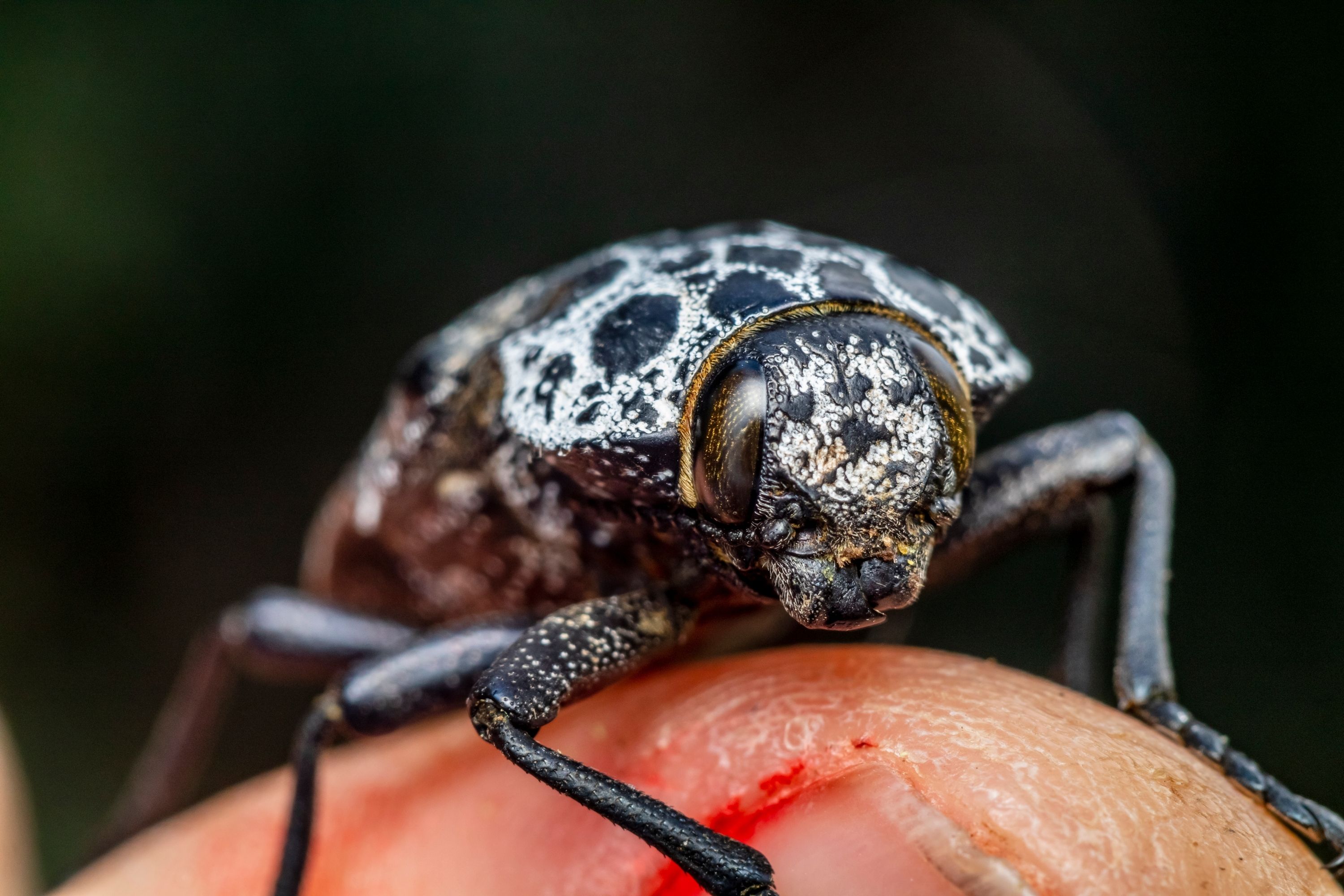Capnodis cariosa
(Capnodis cariosa)

Description
Capnodis cariosa is a beetle in the jewel beetle family and subfamily Chrysocroinae. With a length of 26 to 34 millimeters, it is one of the largest European jewel beetles. Itcan occur as a pest in pistachio crops. The head is broad with large, sideways eyes. The eleven-limb antennae are widened inwards from the fifth segment (sawn). The upper lip is square. The upper jaws are kinked, curved (picture 2) and bidentate. The last two segments of the jaw are spherical to ovoid. The end member of the lip button is also spherical. The pronotum is much wider than it is long and is heart-shaped at the front. For the most part, like the top of the head, it is densely and coarsely punctured. The dots are filled with a chalky substance, so the dotted areas appear white. Such dotted white fields also appear irregularly distributed on the elytra. Above the dense puncture of the pronotum rise smooth, matt black, shiny surfaces (mirror spots). In Capnodis cariosa, these give the impression of the footprint of a three-toed paw, which is framed by six round mirror spots on the sides and in front (Fig. 5). In contrast to the similar species Capnodis tenebrionisare at the base of the elytra three roundish large specular spots. The middle of these encloses the deep horseshoe-shaped pit characteristic of the genus, which lies at the base of the pronotum in front of the pronotum (Fig. 4). It can be seen more clearly in Capnodis cariosa than in Capnodis tenebrionis. The elytra are striped lengthwise by rows of punctures. Outside the white areas they are finely wrinkled across. At the base they are together narrower than the pronotum. Towards the back they initially hardly narrow, then more, and end in a truncated extension. The tiny, rounded shield is embedded in a depression on the inside of the base of the two elytra (Fig. 4).
Taxonomic tree:







